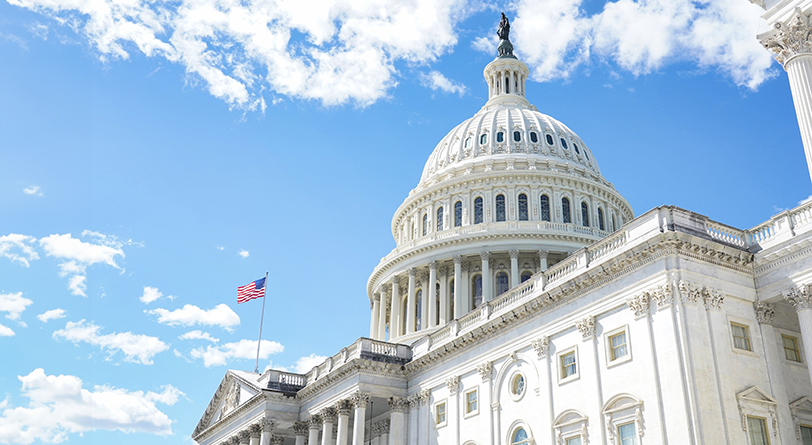Early in a new year is typically a busy time for the Flexible Packaging Association (FPA) as it tries to stay on top of proposals coming out of state legislatures. But this winter and early spring also had FPA’s advocacy team members navigating wild swings on the federal level.
The question is whether there might be opportunities to improve FPA’s position on various federal measures as the second Trump administration attempts to fulfill its promises to streamline the government and eliminate regulations it deems unnecessary.
For example, some discussions began early in the year about whether the U.S. Federal Trade Commission should take the lead with any labeling laws involving packaging instead of the U.S. Environmental Protection Agency, says FPA President and CEO Dan Felton. But how would FPA member companies be impacted by such a change?
“That’s one example,” Felton adds. “Are there opportunities for our members to work with the administration to have legislation shift to work better for our members?”
Another example: FPA submitted 22 pages of comments at the end of 2024 on proposed rules by the U.S. Occupational Safety and Health Administration (OSHA) to further regulate heat-related injuries in the workplace. With the Trump administration taking over, it isn’t clear what will happen, Felton adds.
“It isn’t a good rule, and 22 pages says we had a lot of thoughts about it,” Felton says. “We’re still trying to monitor and identify where there may be opportunities to either eliminate proposed changes or to be more proactive with adjustments.”
So far, a hearing is still scheduled for June on the OSHA proposal.
Monitoring Changes
John Richard, FPA’s director of government relations, says there might be other opportunities in the Trump administration to advocate for issues important to the flexible packaging industry, such as any rules that will be developed to address food waste and plastic waste.
“There are going to be opportunities for the industry to reset the narrative on food and plastic waste proposals,” Richard says. “But it’s too early to have anything concrete to say.”
Felton suggests that the food waste strategy will be important to monitor closely.
“Our view was that the strategy didn’t really recognize the value of packaging, so does it just stall out completely?” he says. “Anything could happen at this point.”
Felton points out that the National Association of Manufacturers and the U.S. Chamber of Commerce have been focused on regulatory relief, generally, he adds.
“Clearly, there’s an opportunity there with the Trump administration, but we don’t know what that will ultimately look like,” Felton says. “These will be things that FPA is not going to be leading the charge on, but we’ll pay attention to see if there are opportunities for us.”
Tariff Rules
Meanwhile, the on-again, off-again tariff rules have been especially difficult to navigate, Felton and Richard say.
When the first Trump administration enacted tariffs on aluminum imports from China and the Biden administration expanded them to South Korea and Thailand, U.S. companies began to look for alternatives such as using aluminum foil as a barrier in some flexible packaging.
“That had been the concern previously,” Felton says about foil. “Now we have the additional proposals on tariffs and retaliatory tariffs. It has broader reach than just foil, so that is what we are figuring out.”
The Trump administration has imposed unprecedented global tariffs, including on the United States’ closest trading allies.
“We have to take President Trump at his word on these tariffs,” Richard says, “even though President Trump has been known to negotiate deals on tariffs, it appears negotiations will be done at the margins while protectionism will remain the policy of the day.”
Thomas A. Barstow is senior editor of FlexPack VOICE®.
